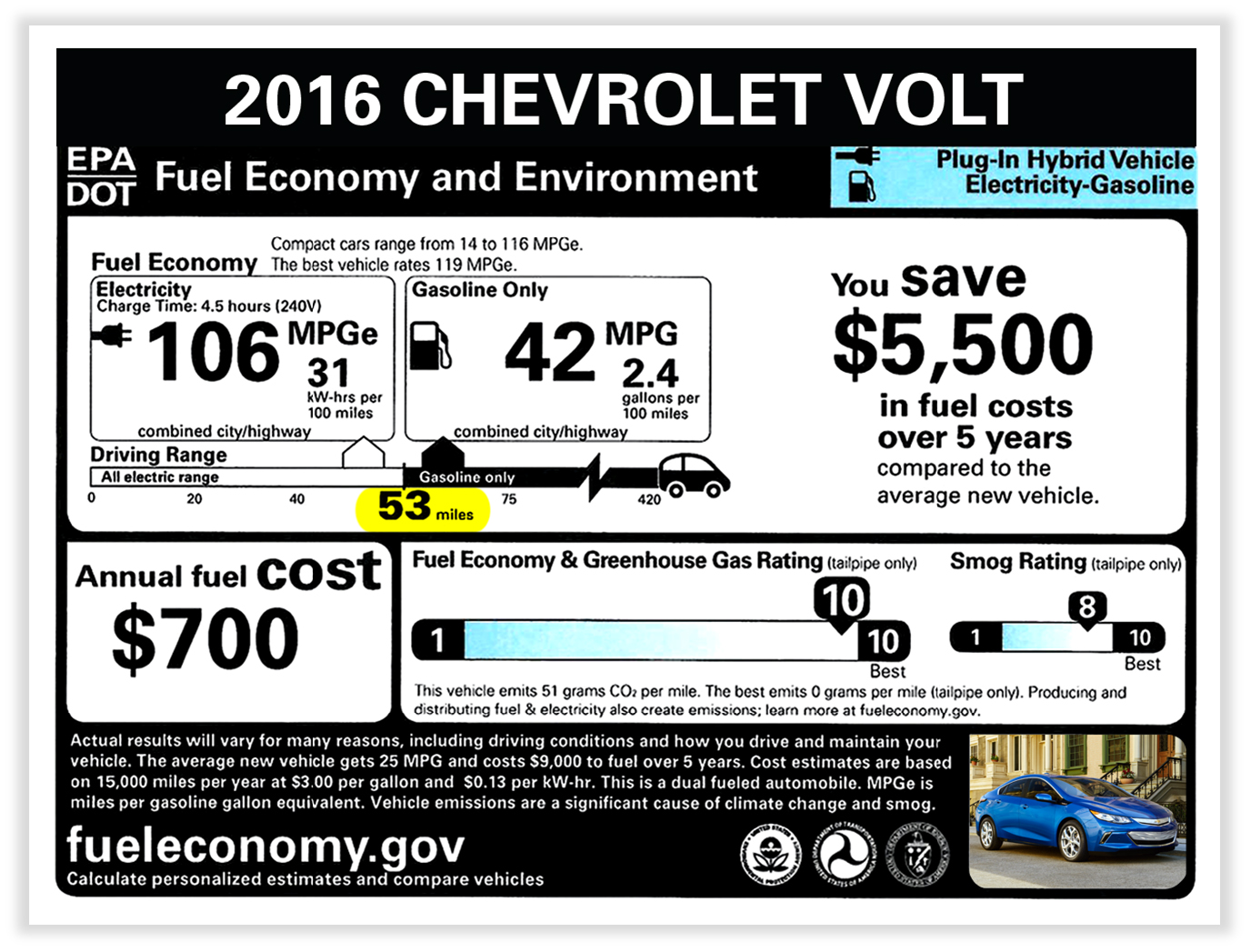
- #Chevy volt range calcultor how to
- #Chevy volt range calcultor driver
- #Chevy volt range calcultor download
#Chevy volt range calcultor how to
GM's PR flacks undoubtedly are scratching their heads trying to figure out how to spin it all. Critics will seize on the 35 mile range and 37 mpg figures. Volt fanboys will hail the 93 mpg equivalency under electric power. "That's best in segment for compact cars."Īt the bottom line, there's something for everyone on this label. "Our overall combined average is 60 mpg," said Doug Parks, Volt global vehicle line executive for the Volt.
#Chevy volt range calcultor driver
Of course, the typical driver will go all kinds of distances between charges, and the EPA's got a number for that, too: 60 mpg equivalent "combined composite."

Drive 75 miles between charges and you can expect 69 mpg. Drive 60 miles between charges and you're looking at 89 mpg. If you drive 45 miles between charges, meaning you're doing about 10 miles with the gasoline assist, you'll get 168 mpg. Power outlet, front auxiliary, 12-volt Seat adjuster, driver 4-way manual. That's where things get a bit tricky when you're looking at the EPA window sticker (.jpg). The whole point of a plug-in hybrid (yes, the Volt is a plug-in hybrid) is to plug it in. But no one expects Volt owners not to charge the battery - something the EPA says will take four hours at 240 volts. If you never charge the battery and only drive around using the gasoline engine to generate electricity, you'll get 37 mpg combined city and highway. I think 40 was a good single shooting point." "I'm confident a lot of people will get 40 or above based on the climate and how they drive.
#Chevy volt range calcultor download
Download and print the Electric Power vs."I don't think we were surprised," DiSalle said of the vehicle's official range.During that time we averaged 37.2 miles on EV range and 35 mpg out of the old-tech. With trip distance 130 km, energy consumption 14 to 20 kWh/100km and battery size 64 kWh - the required state of charge can be estimated to be 18 - 26 kWh or 28 - 42% as indicated below. The 2016 Chevy Volt is available in two trim levels, LT and Premier. With battery size 64 kWh, state of charge 40% or 25.5 kWh and energy consumption 14 to 20 kWh/100km - the range of the electric vehicle can be estimated to be 130 to 180 km as indicated below.Įxample - Estimating Required State of Charge - SOC EV - Electrical Vehicle - Charging Speed.The second-generation Volt boasts an extended range, sleeker and sportier design, 80 km of pure EV. The 2019 Chevy Volt accelerated in providing a great MPGe and it also competed well with the 2019 Hyundai Ioniq and 2019 Kia Niro. General Motors has unveiled the 2016 Chevrolet Volt at the 2015 NAIAS a.k.a.

The fuel tank capacity is 8.9 gallons total with the standard 3.6-kWh unit battery.

The default values are for battery size 64 kWh, State of Charge SOC 40% and 25.5 kWh, energy consumption 17 kWh/100km (28 kWh/miles) and range 150 km (93 miles).ĭownload and print EV - Electric Vehicle - Battery Size, State of Charge SOC, Energy Consumption and Range Chart! With regular gasoline, the Volt earned a combined EPA of 42 mpg and could run up to 420 miles by consuming 2.4 gallons/ 100 miles fuel. The chart can also be used the "other way round" by estimating required state of charge from range. The chart below can be used to estimate the range of an electric vehicle based on size of battery, state of charge and energy consumption.


 0 kommentar(er)
0 kommentar(er)
